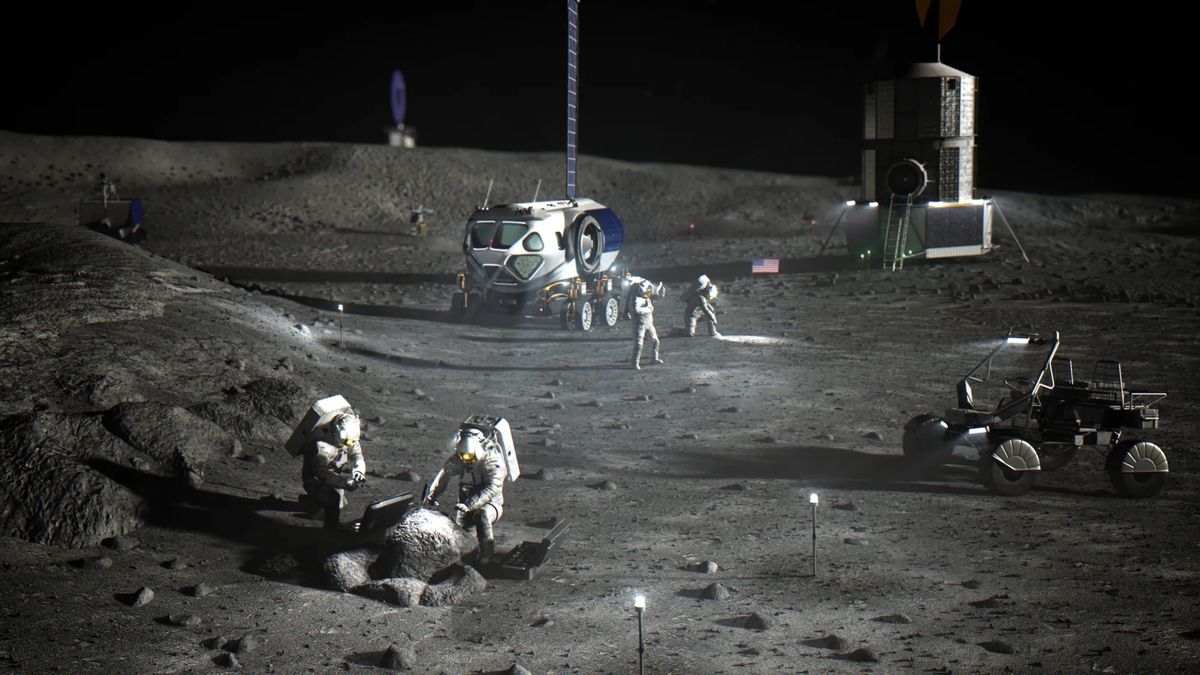NASA is indeed bringing a celestial internet of sorts to the moon, but it is not the same internet we know on Earth. The technology employs a “protocol suite” of new networking technologies for transmitting information between astronauts in space and those on Earth. Additionally, Nokia announced plans to bring LTE/4G to the moon to support communication between the lunar lander and rover.
In March 2023, NASA took to Instagram to share the space agency’s plans to install an internet-like network in space that will connect astronauts with researchers on Earth.
Though the notion may seem like a concept straight out of a lunar-colonizing, science-fiction flick, NASA is indeed bringing a celestial internet to the moon with help from telecommunications giant Nokia. To support the space agency’s communication goals, the Finnish company also announced in 2022 plans to deploy LTE/4G communications to the lunar surface.
However, this connectivity is not the same version of the internet or LTE/4G connectivity — that is, the fourth generation (or Long Term Evolution, LTE) of broadband cellular network technology — that we know and use on Earth.
Both of the above-listed initiatives will support the objectives of the Artemis Mission, an initiative to establish a base camp on the moon to be launched by 2025.
Here’s how.
Nokia To Launch LTE/4G on Moon To Facilitate Communication Between Lunar Lander and Rover
In 2022, Nokia first announced plans to launch LTE/4G connectivity on the moon to establish communication between the lunar lander and rover.
The technology will be incorporated with an LTE base station equipped with a “fully integrated cellular network” to allow the base camp lander to communicate with its lunar rover as a means to provide “lunar surface connectivity.”
Range tests will be conducted up to a .6-mile radius between the lander and rover, to have the entire system monitored and configured from Earth eventually.
Though this project supports the goals of the Artemis Mission, it is separate from NASA’s newly developed space “internet.”
NASA To Expand Its Space 'Internet' Program to Enhance Data Distribution
In a news release dated March 1, 2023, NASA detailed a new tool to overcome signal disruption: a communications networking protocol called High-Rate Delay Tolerant Networking (DTN) that employs a “protocol suite” of new networking technologies for transmitting information between astronauts in space and people on Earth. The space agency wrote:
DTN automatically ensures information is delivered using a process called “store-and-forward,” which allows data to be forwarded as it is received or stored for future transmission if the signal becomes disrupted. Data store-and-forward capability enables internet-like concepts in space.
DTN is essentially the cosmic version of the internet and is described as a “similar concept of internet networks,” in which space missions will begin to use optical, or laser, communication systems that allow for more data to be communicated. The technology serves as a conduit for bringing information from space to Earth.
Spacecraft communicate using a series of relaying satellites that circle the planet. Experts estimate that up to 95% of that data is not transmitted back to Earth and will never be recovered. DTN builds on existing technology by employing a combination of radio frequency and laser communications to send information between spacecraft, astronauts, and potential planets. Data is modulated to be placed within the laser beam before it is transmitted between devices.
The technology has been in development for over a decade, and its proof of concept was unveiled during the 2013 lunar laser demonstration, in which NASA used lasers to send an image of the Mona Lisa to the moon and back to Earth.
A version of DTN is now used on the International Space Station. This transition to a more connected space internet will potentially clean up space communications for a more efficient, secure, and reliable method of communication.
“We’ve been working on developing DTN implementations that will revolutionize space communications by extending internet-like capabilities found on Earth into space,” said Daniel Raible, principal project investigator, in the news release.
“High-Rate DTN is designed with speed and efficiency to keep up with the data rates of newer laser and radio frequency communications systems.”

